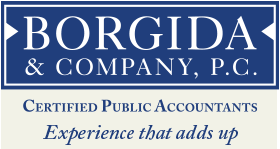A Sole-Proprietorship
Many self-employed people will run their business as a sole-proprietorship. They are very easy to set up and cost very little to form.
First, decide on a name. For example, John Jones D/B/A (Doing Business As) Prime Time Painters. Then register your name with Town Hall. Get some business cards, letterhead and stationary. You are now well on your way.
If you have employees you will need to get a federal tax identification number. There will also be registration required with the state. In Connecticut you will need to register with the Department of Revenue Services and with the Department of Labor. Additionally you will need to obtain workers compensation insurance on your employees.
The issue with a sole-proprietorship is that all of the proprietors’ assets are potentially subject to claims from creditors.
The Story
A potential client called us recently and told me his story.
He was a self-employed sole-proprietorship that did home remodeling. On this job he subcontracted out the roofing. He accepted a certificate of insurance from the roofing subcontractor. Unfortunately he didn’t notice that the insurance had expired 14 days ago.
The roofer starts working. Then the roofer brings on to the jobsite a worker that is not his employee, he is a subcontractor. This individual however does not have insurance and proceeds to get hurt on the job.
The injured laborer files for workers compensation. The Connecticut Workers Compensation Commission hears the case and rules that the injured worker is owed $69,000.
Could This Have Been Avoided?
Probably not. Accepting an expired insurance certificate was likely the beginning of the end in this case.
However for many small businesses forming a Limited Liability Company (“LLC”) goes a long way to protecting your assets.
Contact an Attorney to register your LLC with the State. An LLC should minimize the claims of creditors.
Forming an LLC is one thing.
Acting like an LLC is another thing.
How do you act like an LLC?
* Have an operating agreement (this is similar to a partnership agreement)
* Obtain a federal tax identification number
* Open and use a bank account exclusively for business
* If you have employees, obtain workers compensation insurance
* Have your business cards, stationary, contracts and invoices all say “LLC” on them
By taking these steps, you are documenting that you are in fact holding yourself out as an LLC.
Be cautious when forming an LLC. When a partnership is formed the parties participating are called partners. In an LLC these are called members. Many years ago you needed to have at least two members to form an LLC. This is no longer the case. A person can have their own LLC called a single member LLC. Depending on the state you are located in and the potential claims made against your business, a multi member LLC may offer more protection than a single member LLC.
Consult your legal counsel as we are not rendering legal advice.
Have you formed an LLC for your business?


